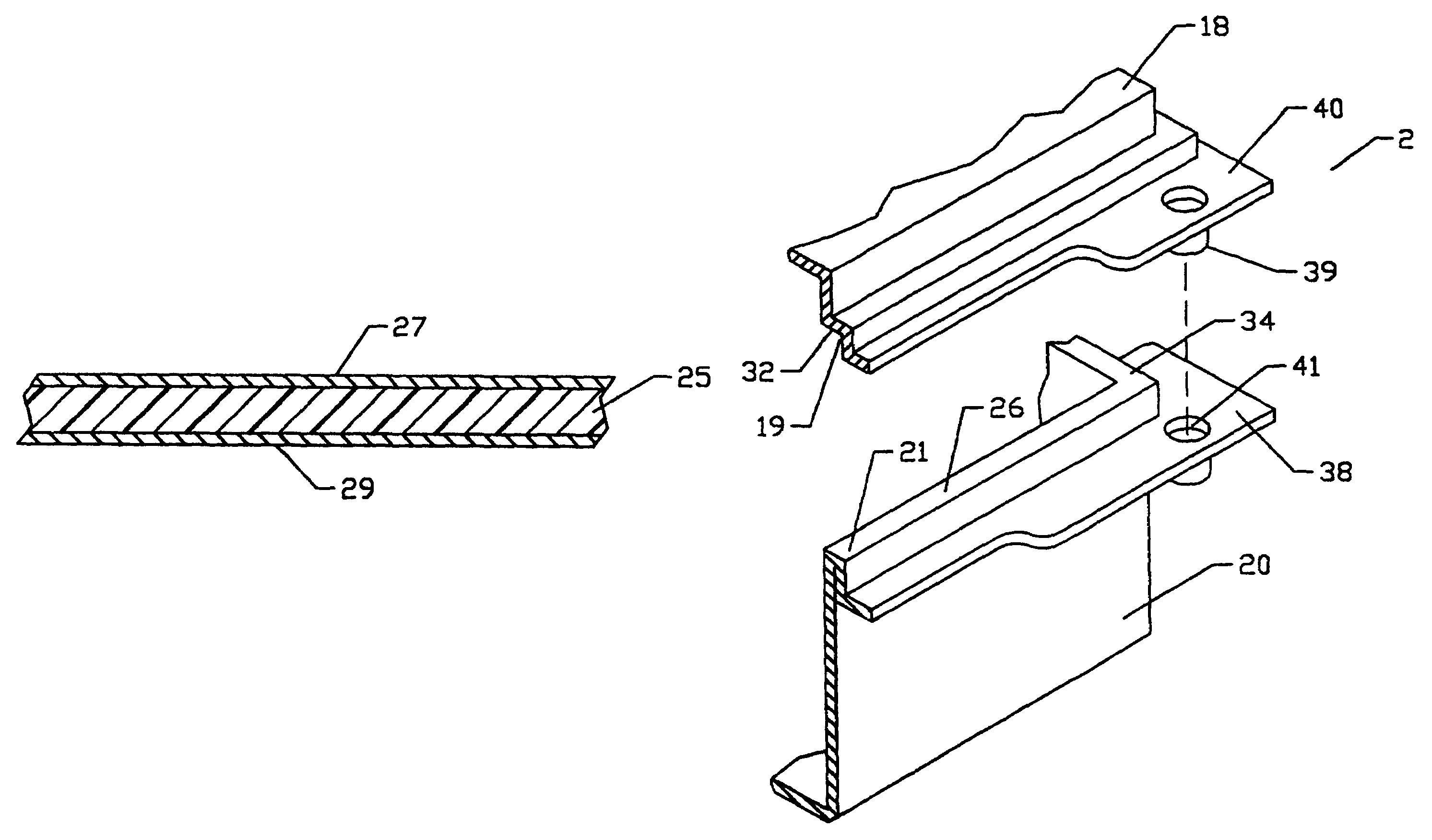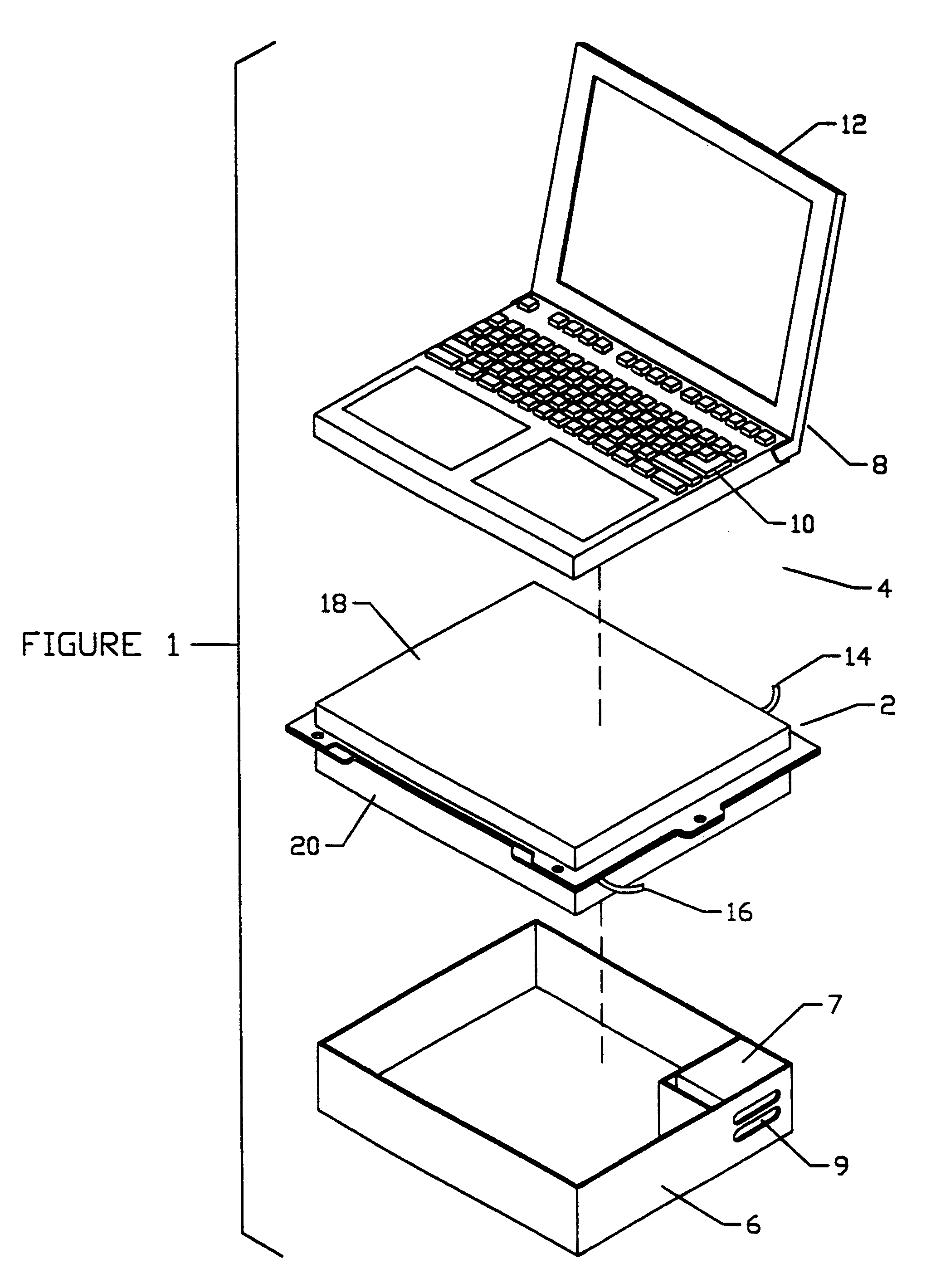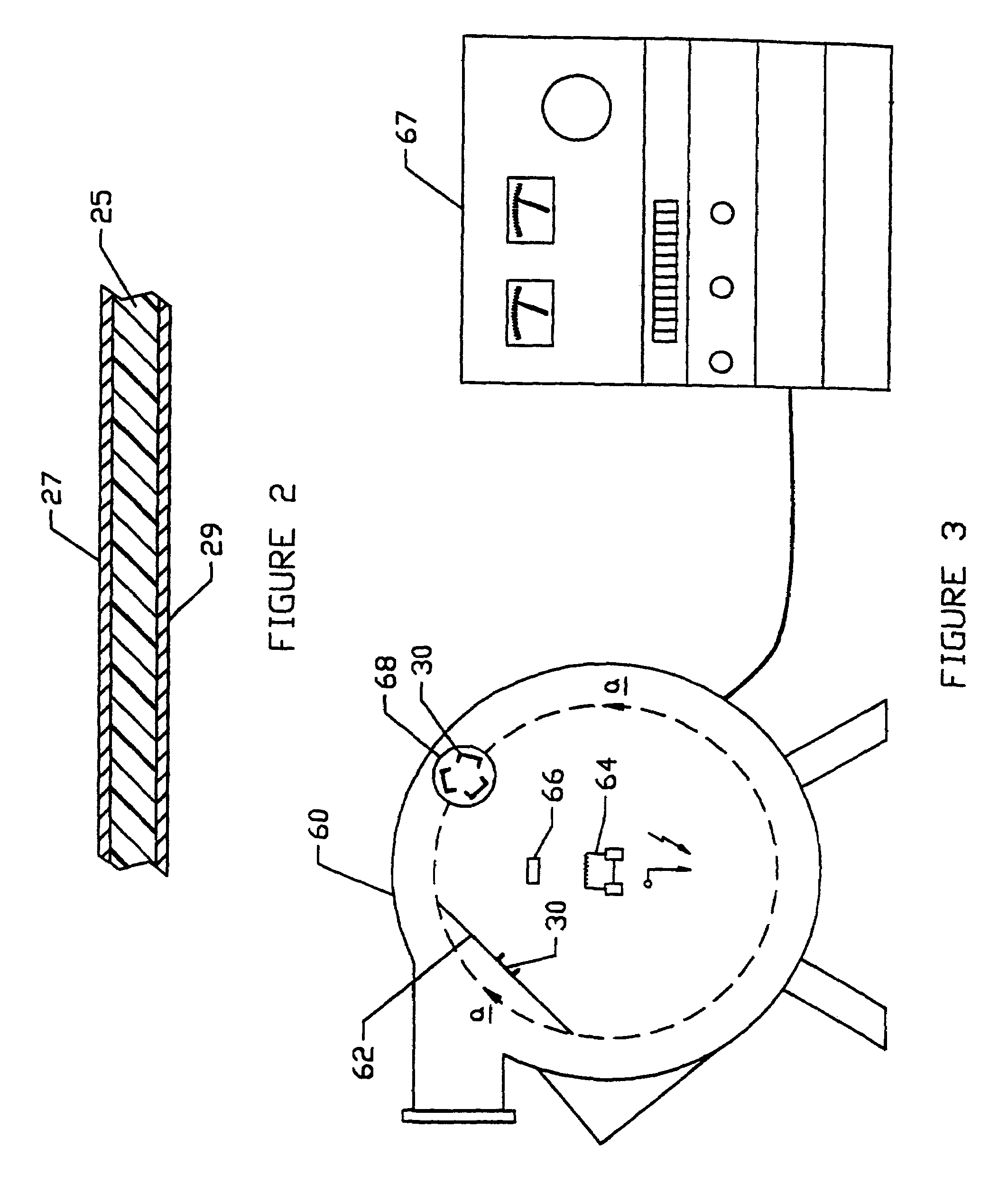Electromagnetic interference shields for electronic devices
a technology of electromagnetic interference and shields, applied in shielding materials, instruments, instruments, etc., can solve the problems of insufficient emi dissipation of conventional thin-film vacuum metallizing, inconvenient application of relatively thick thin-film equipment for ornamental reflective appearance purposes, etc., to achieve the effect of superior conductive wall coupling structure and increase the resistance of shielded components
- Summary
- Abstract
- Description
- Claims
- Application Information
AI Technical Summary
Benefits of technology
Problems solved by technology
Method used
Image
Examples
example
[0083]Eight samples were tested for shielding effectiveness using the “modified MIL-STD-285” method. In this procedure, samples to be tested are mounted in a test opening in the wall of shield room. The tests are run by radiating the test samples with a signal generator and antenna inside the room, and measuring the levels outside the shield room with a spectrum analyzer and antenna. A baseline measurement was made through the open hole, without any samples in place. The difference in these two measurements—before and after the samples are installed in the hole—yields the “shielding effectiveness.”
[0084]Certain errors can be introduced in this method at lower frequencies. The “hole” itself provides shielding when the longest dimension is less than one half wavelength, but since values are subtracted from the “baseline”, the errors give more conservative lower levels of shielding than free space measurements. In this case, these errors only affected the 30 and 50 MHz measurements, ma...
PUM
| Property | Measurement | Unit |
|---|---|---|
| thickness | aaaaa | aaaaa |
| thick | aaaaa | aaaaa |
| thick | aaaaa | aaaaa |
Abstract
Description
Claims
Application Information
 Login to View More
Login to View More - R&D
- Intellectual Property
- Life Sciences
- Materials
- Tech Scout
- Unparalleled Data Quality
- Higher Quality Content
- 60% Fewer Hallucinations
Browse by: Latest US Patents, China's latest patents, Technical Efficacy Thesaurus, Application Domain, Technology Topic, Popular Technical Reports.
© 2025 PatSnap. All rights reserved.Legal|Privacy policy|Modern Slavery Act Transparency Statement|Sitemap|About US| Contact US: help@patsnap.com



